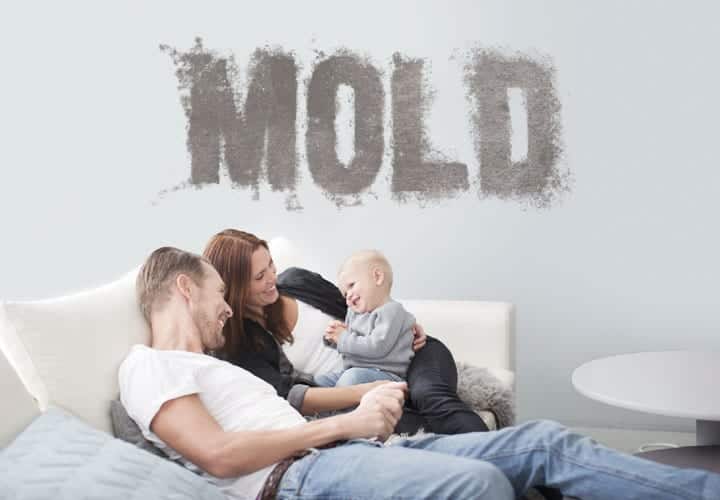
While mold is found virtually everywhere you go and is not always harmful, there are certain types of mold or fungi that can pose a serious health risk to you and your family if they are present in your home. Here are a few of the most common species of toxic mold that can grow inside homes when ever there are wet surfaces or water damage, and a few tips for what to do if you think there might be harmful mold in your home.
1. Stachybotrys
Commonly referred to as “black mold,” stachybotrys is one of the most dangerous types of mold and can cause flu-like symptoms, diarrhea, headaches, memory loss and severe respiratory damage. Because their lungs are still developing, children are at an even greater risk for health problems associated with exposure to black mold.
As its nickname suggests, black mold is dark in color, although it can also be grey or dark green. It typically has a very musty or mildewy odor and is found in very damp areas of homes and other buildings.
2. Chaetomium
Chaetomium is most commonly found in homes that have water damage, as it thrives in wet, dark environments such as drywall, wallpaper, baseboards and carpets. This type of mold is similar to black mold and sometimes even shares the same environments.
Along with general signs of allergies such as red, watery eyes and trouble breathing, chaetomium spores can also cause neurological damage and certain autoimmune diseases.
3. Aspergillus
Although aspergillus spores are present in the air that many of us breathe every day, this type of mold can be dangerous to people with comprised immune systems. Exposure to aspergillus may cause allergic reactions, lung infections and a specific type of infection known as aspergillosis.
4. Penicillium
Like aspergillus, penicillium is abundant in many everyday environments, but if trapped inside your home, it can cause asthmatic symptoms, bronchitis and other respiratory problems.
5. Fusarium
Fusarium is a type of mold that is most commonly found in plant debris and soil, although it can also be found in very damp areas of your home such as underneath carpeting, inside drywall or foam insulation and in humidifier pans and HVAC systems.
Although quite rare, a serious eye infection called fusarium keratitis can result from exposure to fusarium spores.
6. Alternaria
A well-known allergy-causing mold, alternaria is present in high amounts in many climate zones during the spring and summer. Although this type of mold is usually not found in building materials, it can be present in the air inside your home and may also be found in electric cables, cardboard, canvas and other textiles.
What to Do If You Suspect Your Home Has Toxic Mold
Because toxic mold exposure can be a serious health threat, it’s important that you get professional help if you think you might have dangerous mold in your home. The first step is to have your home professionally tested for mold. This should involve a thorough inspection for any water damage or mold growth found on materials in your home, as well as an air quality test to check for airborne spores.
Next, samples will be sent to an environmental testing laboratory to determine if there are harmful species of mold in your home. If needed, you can then call in a mold remediation company to remove the toxic mold in your home and get to the bottom of any remaining sources of water damage.
Once the mold has been remediated, a clearance air test can be performed to ensure that the mold levels in your home are safe.
Don’t Let Mold Hide In Your Home!
To an untrained professional glancing at a suspect problem area might not give you the answers you need. Give us a call to discuss how we can help identify and solve the issue.
